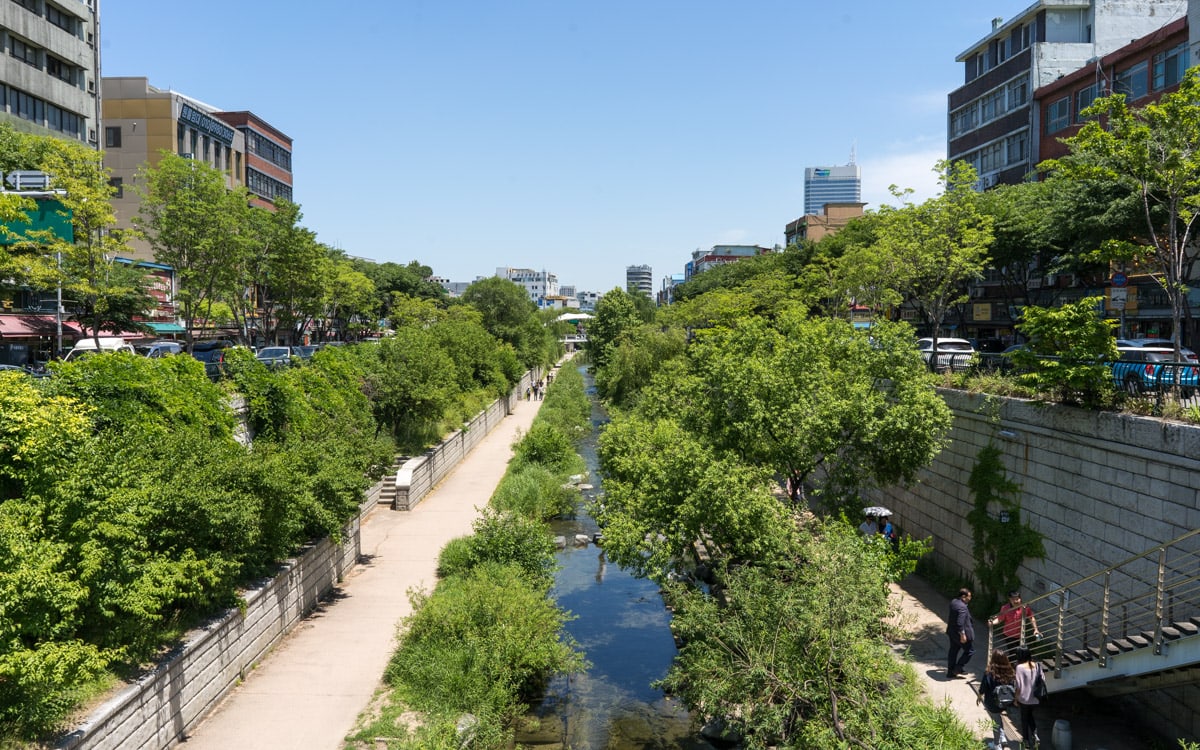
Cheonggyecheon Stream is an 8.4 km (5.2 mi) waterway and public space flowing through the heart of downtown Seoul from west to east. During the Joseon Dynasty, the stream was known as Gaecheon, meaning open stream.
Over the years, multiple kings ordered numerous refurbishments of the stream that brought national pride.
During the reign of King Taejong, the government strengthened the banks and built bridges across the stream. He ruled from from 1400 to 1418.
Refurbishment work became a national project during the reign of King Yeonjo, who ruled from 1724 to 1776.
During the Japanese occupation, the stream became known as Cheonggyecheon. During this time, attempts to cover it up were unsuccessful.
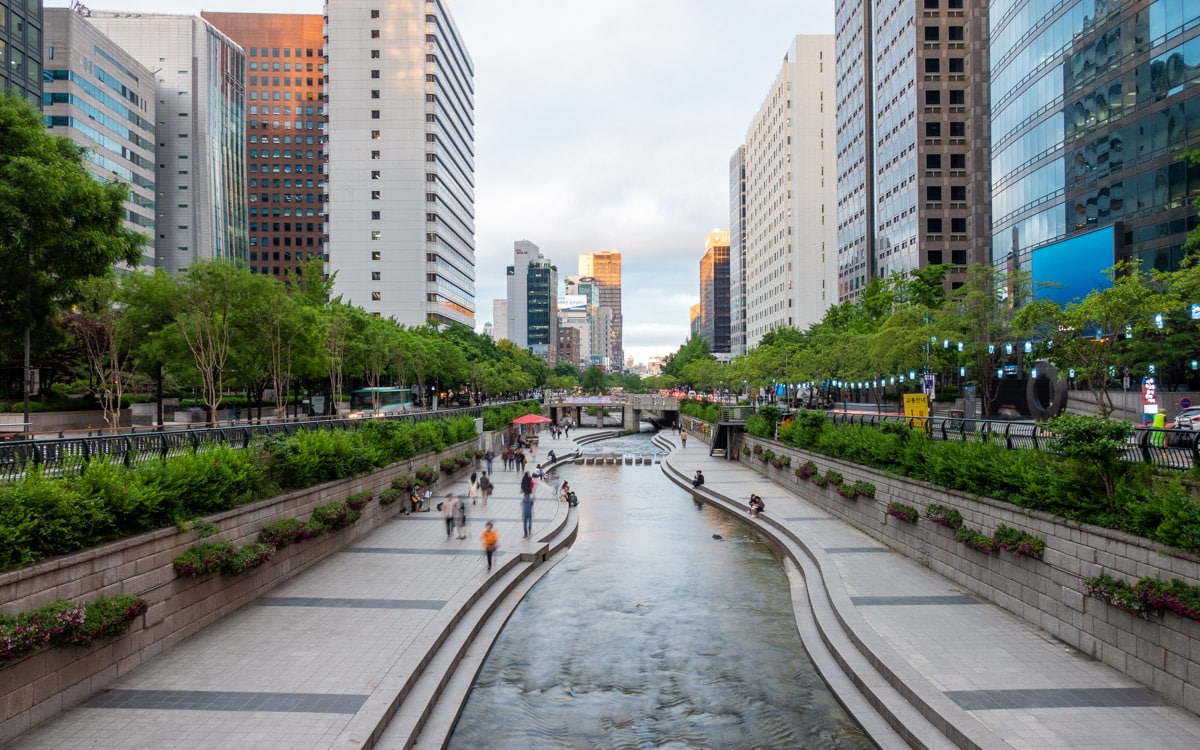
After the Korean War, people built makeshift houses on the banks of the water. Over the next few years, trash and waste from residents living in the area accumulated. This buildup caused conditions to deteriorate and become an eyesore for the city.
In 1958, construction began to convert the waterway into an elevated highway. By 1976, workers completed the 5.6-kilometer (3.4-mile) concrete highway.
Restoration of Cheonggyecheon Stream

In July 2003, work began to remove the elevated highway and restore Cheonggyecheon to its original beauty.
Work took over two years to complete. The project included pumping 120,000 tons of water back into the dry stream and restoring Gwangtonggyo Bridge and Supyogyo Bridge.
In September 2005, Cheonggyecheon reopened to the public. Today, this natural landmark is a popular destination for tourists and locals who visit to experience natural beauty and wildlife in a large, urban city.

Cheonggyecheon Stream Information
Hours
24 hours
Admission
Free
Address
1 Cheonggyecheon-ro, Jongno-gu, Seoul, Korea
GPS Coordinates: 37.56918, 126.97920
How to Get Here
Cheonggyecheon Stream can be accessed by multiple subway lines and subways stations.
Line 1
Stations : City Hall, Jonggak, Jongno 3-ga, Jongno 5-ga, Dongdaemun, Sinseoldong
Line 2
Stations : Euljiro 1-ga, Euljiro 3-ga, Euljiro 4-ga, Sindang, Sangwangsibni
Line 3
Stations : Jongno 3-ga
Line 4
Stations : Dongdaemun History & Culture Park
Line 5
Stations : Gwanghwamun
Cheonggyecheon Stream Video
Map
Official Website
https://english.visitseoul.net/area/CheonggyecheonStream/ENP000034
Additional Resources
Viator by TripAdvisor
Viator is a popular online platform that helps travelers book tours, activities, and unique experiences worldwide, including in Seoul. It connects users with a wide selection of options – from sightseeing tours to cultural events and outdoor adventures – all offered by local providers.
Klook
Klook offers discounted tickets and reservations for various attractions and services in Seoul, from theme parks and museums to tours and transportation options.
Rakuten
Save money while exploring Seoul with Rakuten's cashback program. Book your hotels or other services through Rakuten and enjoy cashback rewards and exclusive deals.
If you sign up using the link below, you could earn $30 cashback on your first purchase over $30.
Book Recommendations
For an immersive guide to Seoul, many travelers choose to bring a book along. Fodor's Seoul, for example, offers detailed recommendations on sights, restaurants, maps, and travel tips.
Nearby Sights
Cheonggye Plaza

Cheonggye Plaza is a public square in central Seoul that commemorates the restoration of the Cheonggyecheon Stream which was once an elevated highway. The plaza is located at the head of the stream which runs 8.4 kilometers (5.2 miles) through the heart of Seoul. The area covers almost 2,314 square meters (25,000 square feet).
40th Anniversary Monument of Gojong's Enthronement
The 40th Anniversary Monument of Gojong’s Enthronement was built to honor the 40th anniversary of the crowning of Gojong as the 26th Joseon Dynasty king. Gojong became king on December 13, 1863 at the age of eleven. His father, Heungseon Daewongun, ruled for him until he was an adult in 1873. In 1895, the wife of Gojong, known as Queen Min and Empress Myeongseong, was assassinated by the Japanese.
Read more about 40th Anniversary Monument of Gojong's Enthronement
Statue of Admiral Yi Sun-sin
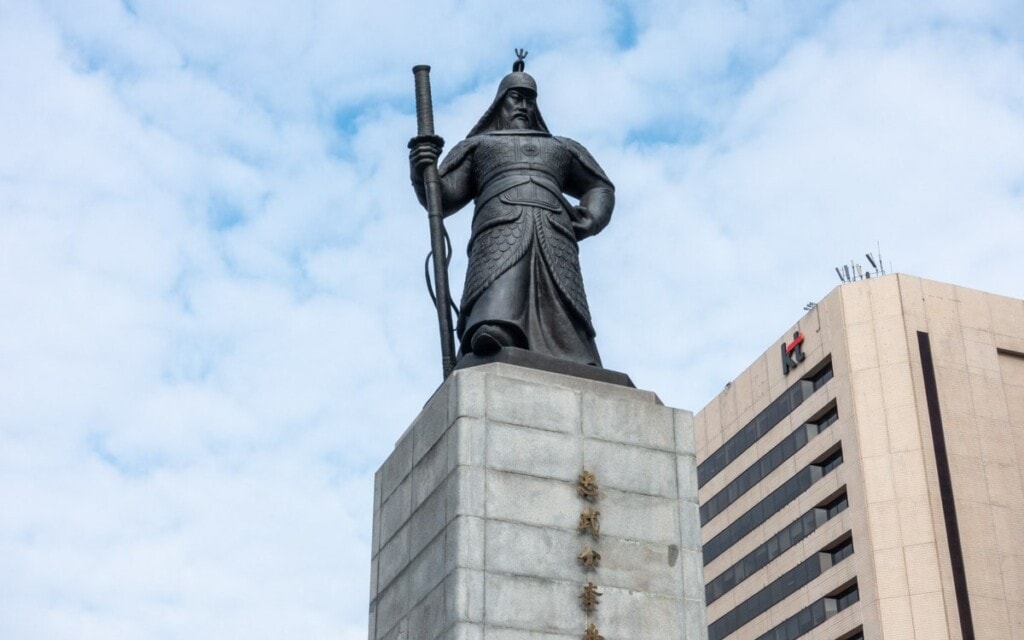
Walking south of the statue of the great King Sejong the Great brings you to the towering statue of Admiral Yi Sun-sin, also known as Yi Sunshin. The statue is officially named 12.23 Fountain in honor of the 23 battles he fought using 12 warships. Yi, born on April 28, 1545, is best known for his military achievements during the Imjin War.
Old Seoul City Hall (Seoul Metropolitan Library)
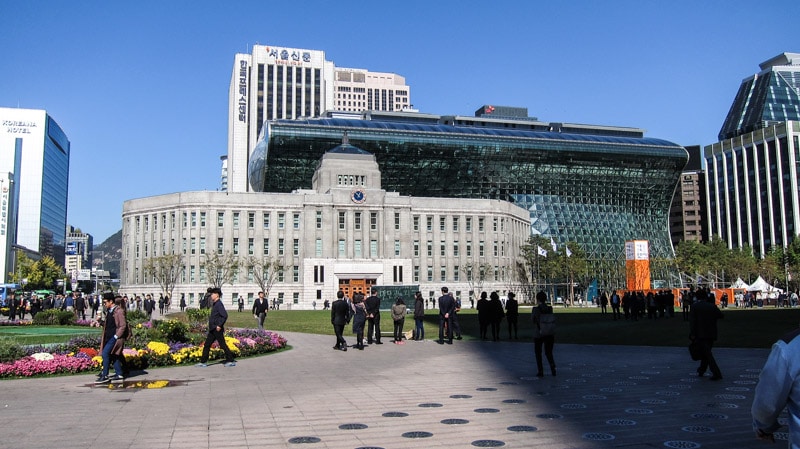
The Old Seoul City Hall, now the Seoul Metropolitan Library, is a Renaissance style building that served as the city hall of Seoul from 1945 until 2008. After over four years of construction, the new city hall building opened on August 27, 2012. The building was slated for demolition multiple times but was saved because of its historical importance.
Read more about Old Seoul City Hall (Seoul Metropolitan Library)
Seoul Anglican Cathedral
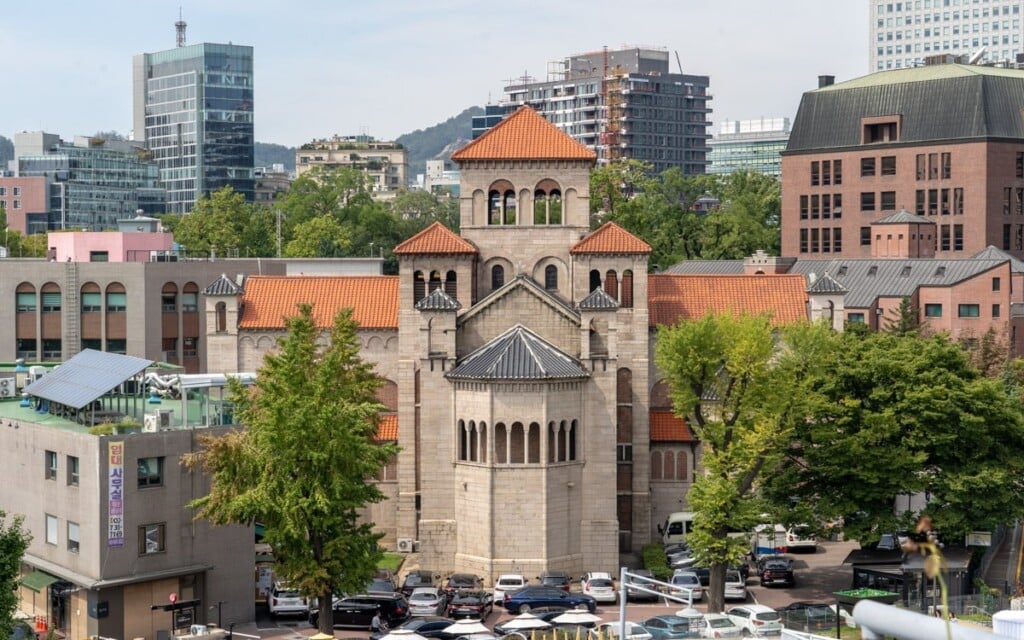
Seoul Anglican Cathedral is a Romanesque-style Anglican church founded by Bishop C.J. Corfe in 1922. It is located just west of Deoksugung Palace and Seoul Plaza. Its official name is Cathedral Church of Saint Mary the Virgin and Saint Nicholas. In 1889, Charles John "C.J." Corfe, born in 1843, became the first bishop of the Anglican Church of Korea.
Seoul Plaza

Seoul Plaza is an oval public space located in front of City Hall in the heart of the city. Once a traffic circle, it is now used for events and festivals. Originally, a large water fountain could be found in the center of the traffic circle, but it has since been removed.
Last Updated on Mar 14, 2025